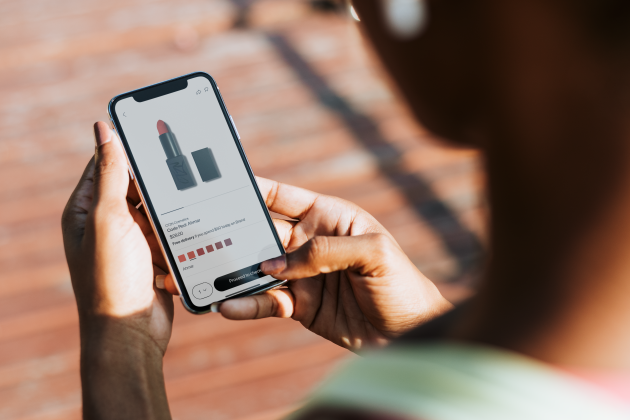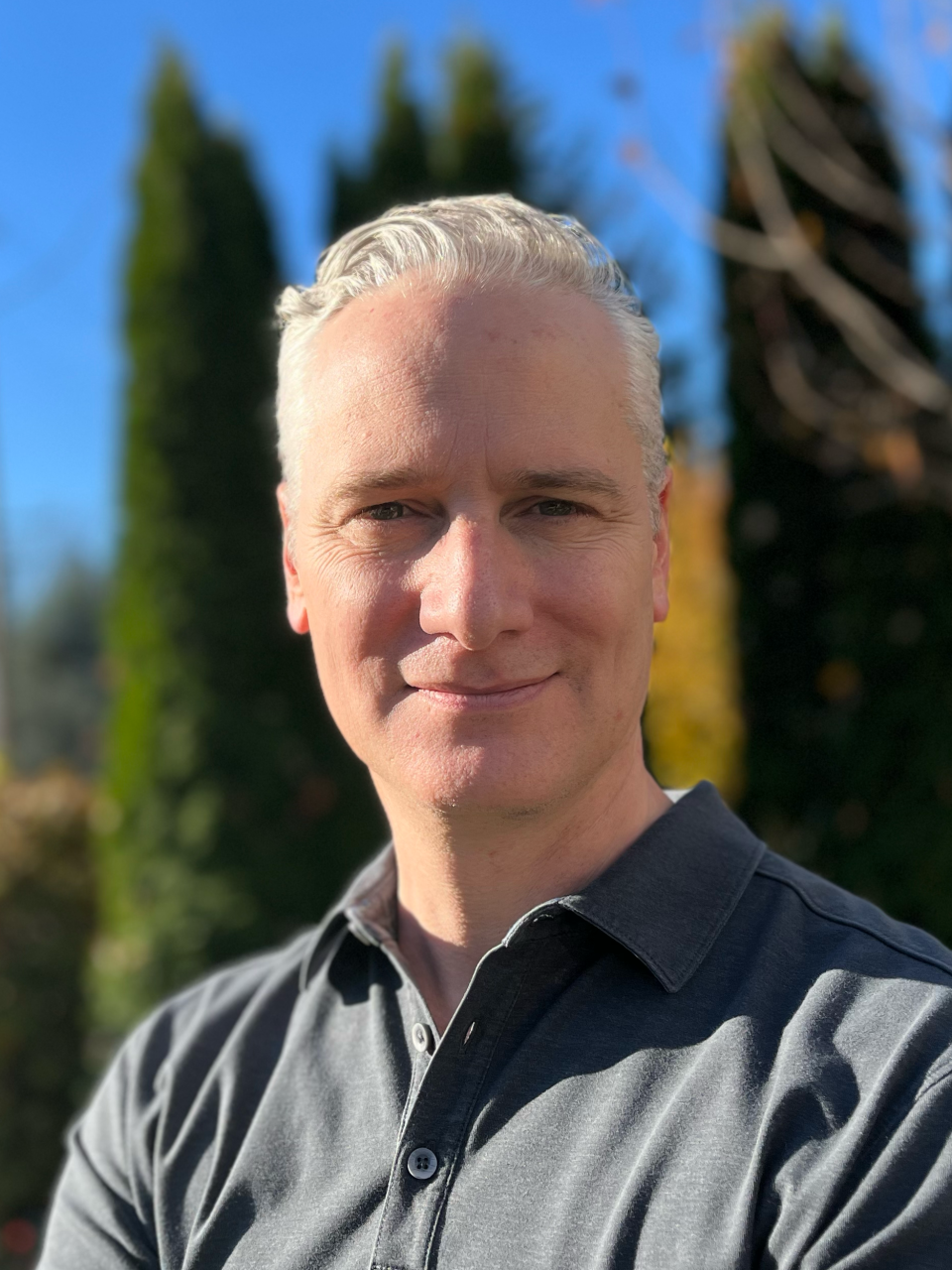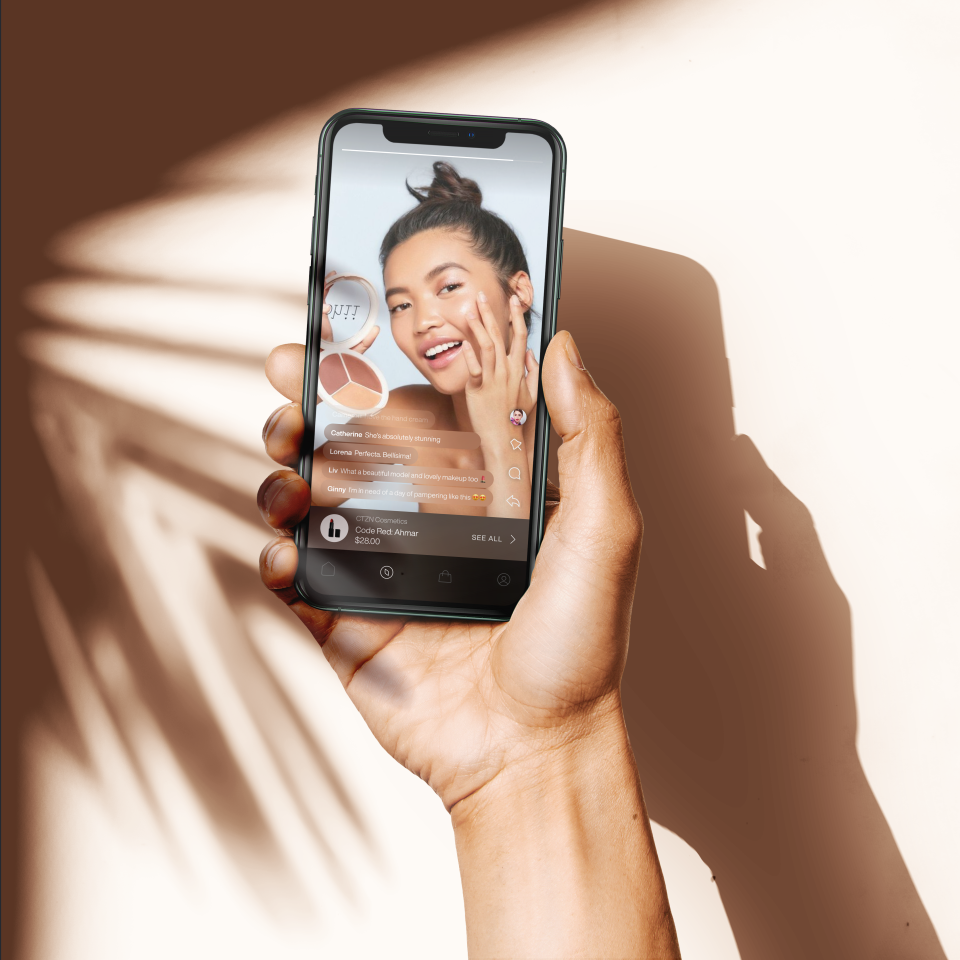EXCLUSIVE: Ex-Amazon VP Dishes on New Beauty Video Shopping App

Scrubbing through a video, looking for the key part of a makeup tutorial or skin care regimen, may soon become a thing of the past, thanks to the type of artificial intelligence at the heart of Trendio Live, a new video shopping platform for prestige beauty that debuted on mobile and Roku TV streaming.
For Alex Perez-Tenessa, a former beauty industry executive who went on to run Amazon Prime Video in the U.S., and his cofounder, tech start-up guru David Olmos, the app works like a serum correcting an annoying blemish on the face of video commerce: the hit-or-miss frustration of tweaking a timeline to find the parts to skip or watch. Given the outsized influence of streaming product demos, tips and tricks and similar visual media on beauty purchasing decisions, it’s easy to believe that streamlining the whole affair could please viewers and even speed the path to checkout. It’s the TikTok approach to building an audience, with data intelligence weaving an endless, ultimately addicting feed of clips.
More from WWD
But for Trendio, populating feeds is only part of the equation. The system also reshapes the actual content, programmatically editing videos to suit each user based on the person’s buying, browsing and viewing habits, to craft an experience with singular appeal.
Perez-Tenessa, now Trendio’s chief executive officer, elaborated in an exclusive interview: “We are leveraging video AI to auto edit the content, so it’ll be most compelling to every individual customer, creating video content that’s truly personalized. I don’t think that anybody is doing that today.”
The premise aims to fill the chasm between the physical cosmetics counter and the online store. The former offers focused advice and explanations, but it’s costly. E-commerce, adept at volume, can fail at guidance, leading to customer abandonment.
Enter bespoke video as a tool for beauty commerce, instruction and even entertainment. Perez-Tenessa believes its time has come because the concept wouldn’t have been possible three years ago. But after advances in video tech and the adoption of more devices paved the way, he “saw an opportunity to address this need for educated shopping in nonrecurring categories — in particular in beauty.”

The experience is unified and cross-platform, with viewers able to tune into the iPhone or Android app on their smartphones, as well as the streaming TV app, also known as “channel” in Roku parlance. While that’s not unusual for shopping initiatives, the difference with Trendio is its approach to the video content itself. The more the system gets to know the consumer, the more it can fine-tune the video editing.
“We track what they do at a very granular level, at a timestamp level, something [most or maybe none of the other] players do. And then we are building and training the models to be able to auto-edit the videos, so that what the customer sees really matches what they’re interested in for any given product,” the CEO said. People can fly through these edited clips, TikTok-style on their phones or watch with friends on television as a form of entertainment in their own right. If they see something of particular interest, they can click to watch the longer version.
The concept looks like a rarity among tech and e-commerce solutions. Apparently others agree, with Perez-Tenessa and Olmos bringing in Amazon Live alum Julie Novak and former Glossier head of makeup category management Leah Grubb to work on the platform. Armed with seed round funding from Madrona, a venture capital firm that backed Amazon early on, Trendio assembled an advisory board that included former QVC board member Michael Zeisser, founder of Amazon Live Munira Rahemtulla and former Zulily CEO Jeff Yurcisin.

According to Perez-Tenessa, many platforms can offer 30-second product overviews but “we believe that if you find something you’re interested in at these price points, you’re going to want to learn a little bit more.”
A longer format offers room to cover the finer points of offerings from Merit, Philosophy, Ursa Major, Nudestix, Kjaer Weis, Joanna Vargas, Coola, Avene and others. Forty brands are available at launch, with each product vetted for high-quality ingredients and efficacy. In fact, practically everything on the platform was carefully curated, including the creators. But not the content.
“Once they’re with us, we let them choose,” Perez-Tenessa said. Creators work on a commission basis tied to sales, so there are no incentives to hype one product or brand over another. “It’s super important for us not to mandate that…we want to make sure that the products they promote, they truly love.”
The calculus of Trendio’s social video pipeline starts with 75 content creators at launch. They produce an average of five videos daily, amounting to more than 300 videos, with plans to step up to more than 1,000 and maintain a fresh set of 1,000 to 3,000 videos on an ongoing basis. While that would show exponential growth, it’s modest for a social or video commerce platform, especially in light of today’s binging habits.
But like other aspects, the company seems less concerned with quantity than quality.
Whether via video upload or through live shopping events, creators craving more flexibility and autonomy may find the proposition attractive. They pick the products to feature, and there’s no pressure to cram a lot of information into a brief clip. They’re encouraged to do deep dives on their favorite makeup or skin care — Trendio’s two main categories for now — in a variety of ways, from demonstrating tips and techniques to sharing what moved them about a founder’s story. Then the video AI slices and dices the footage, promising to highlight the best bits, whatever they may be for each viewer.

The concept touches on the hotly debated issue of optimal social video length. For a while, TikTok’s popularity appeared to clinch the win for short formats, setting off an array of clones. Instagram has been heavily promoting its Reels short videos and YouTube Shorts just hit a milestone in October by breaking 15 billion global views. Even Amazon, Perez-Tenessa’s former employer, has been encouraging the influencers and creators who tout its marketplace goods to keep it brief, calling less than one minute ideal.
Meanwhile, the controversial ByteDance-owned sensation that set off the video sprints has been steadily expanding its maximum length for TikTok videos, likely in service of advancing its own shopping initiative.
Although social media and e-commerce platforms remain obsessed with brevity, plenty support both formats. Just not in the same video.
Whether it ultimately makes much difference to the beauty consumer is an open and fair question. The Trendio CEO believes that it does. Prior to his stint as Amazon’s vice president in charge of the books and then U.S. video divisions, Perez-Tenessa was a VP in charge of beauty and personal care at the largest pharmacy business in the country.
“When I was running U.S. Prime Video, I was exposed to new technologies in video and new shifts in audience demands that opened up opportunities, and they were related to what I had experienced as an executive running the beauty business for CVS, which was that beauty is a complicated category,” he said.
“It’s a science-based category where you need to explain the product, and the story behind the product, and demo the product for people to understand why they’re worth what they cost and why they should buy one product rather than the other one.”
Doing that in an engaging way is harder than it sounds, but for beauty brands, it’s necessary. Because one of the gravest retail sins imaginable is committing an act of tedium. That’s especially true online, where the quick and quippy have long ruled — though, perhaps not anymore.


